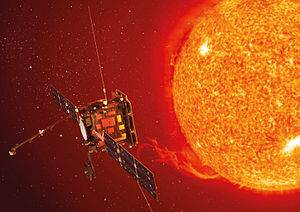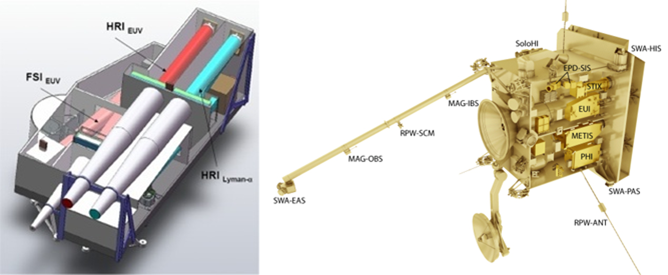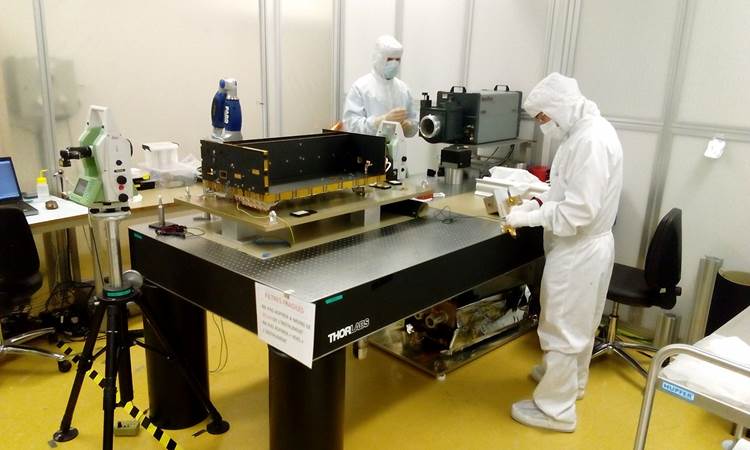The folks at CSL (Centre Spatial de Liège, Belgium) are assembling and testing the EUI (Extreme Ultraviolet Imager). This is an instrument that will be onboard the ESA space mission Solar Orbiter, which is scheduled for launch in February 2019 (hot-of-the-press news). The mission will provide close-up, high-latitude observations of the Sun. Indeed, Solar Orbiter will have a highly elliptical orbit - between 0.9 (aphelion) and 0.28 (perihelion) times the sun-earth distance, that's at its closest within the orbit of the planet Mercury! Also, the spacecraft will gradually increase its inclination to the solar equator over time, reaching up to 25 degrees at the end of the nominal mission (approximately 7 years after launch) and up to 34 degrees in the extended mission phase. This will provide a much better view on the solar poles than we can have from Earth.

The EUI instrument will provide image sequences of the solar atmospheric layers above the photosphere, thereby providing an indispensable link between the solar surface and outer corona that ultimately shapes the characteristics of the interplanetary medium. EUI will also provide the first-ever UV images of the Sun from an out-of-ecliptic viewpoint (up to 34 degrees of solar latitude during the extended mission phase). Note that the very successfull Ulysses, a past ESA/NASA mission, flew over the Sun's solar poles but kept well away from the Sun (more than the sun-earth distance) and without taking any images.

The EUI consortium consists of institutes of 5 different countries. The project is led by CSL, with an important contribution from the Royal Observatory of Belgium. The EUI is currently assembled and tested at CSL, with the men in white meticulously installing and connecting all the critical elements. More info on SolO and its instruments at the ESA website.






